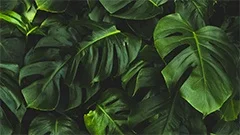Introduction
The interaction between plants and pathogens, which are microorganisms that cause disease, is a fundamental aspect of ecology and evolution. Understanding these interactions is crucial in order to develop strategies for crop protection and improving agricultural productivity. This course provides a comprehensive overview of the key concepts related to plant-pathogen interactions.
Importance of Plant-Pathogen Interactions
Plants are sessile organisms that cannot move away from pathogens, making them susceptible to various types of infections. To cope with these threats, plants have evolved a complex array of defense mechanisms against pathogens. Conversely, pathogens have developed strategies to overcome plant defenses and establish successful infections.
Plant Defense Mechanisms
Plants use both constitutive and induced defense mechanisms to protect themselves from pathogens. Constitutive defenses are always active, while induced defenses are activated in response to a pathogen attack.
Physical Barriers
The physical barriers of plants include the epidermis, cuticle, trichomes, and stomata. These structures help prevent pathogen entry and reduce the chances of successful infection.
Chemical Defenses
Plants produce various chemicals that can inhibit or kill pathogens. Some of these compounds are constitutively produced, while others are synthesized only upon pathogen attack. Examples include phytoalexins, phenolic compounds, and secondary metabolites.
Signaling Pathways
Plants use signaling molecules to coordinate their defense responses. These signals can be triggered by pathogens or by damage caused by the pathogen. The signaling pathways involve various proteins and enzymes that ultimately lead to the activation of defense mechanisms.
Pathogen Strategies
Pathogens have evolved strategies to overcome plant defenses and establish successful infections.
Penetration and colonization
Pathogens use various mechanisms to penetrate the physical barriers of plants, such as enzymes that degrade cell walls or specialized structures called haustoria that facilitate nutrient uptake. Once inside the plant, pathogens produce factors that suppress the host's defense responses.
Evasion and suppression of defense responses
Pathogens can evade or suppress the host's defense mechanisms in several ways. For example, some pathogens produce toxins that inhibit the synthesis of defense-related compounds, while others exploit the plant's own signaling pathways to manipulate the host's responses.
Plant-Pathogen Coevolution
Plant-pathogen interactions are characterized by a complex coevolutionary dynamic. On one hand, plants evolve defenses against pathogens, while on the other hand, pathogens develop strategies to overcome these defenses. This arms race between plants and pathogens has resulted in an impressive diversity of defense mechanisms and pathogenic strategies.
Conclusion
Understanding plant-pathogen interactions is essential for developing effective strategies to protect crops from disease. By studying the various defense mechanisms employed by plants and the strategies used by pathogens, we can gain valuable insights into the dynamics of these interactions and develop targeted approaches to improve agricultural productivity.
MCQ: Test your knowledge!
Do you think you know everything about this course? Don't fall into the traps, train with MCQs! eBiologie has hundreds of questions to help you master this subject.
To go further...
These courses might interest you
Create a free account to receive courses, MCQs, and advice to succeed in your studies!
eBiologie offers several eBooks containing MCQ series (5 booklets available free for each subscriber).







